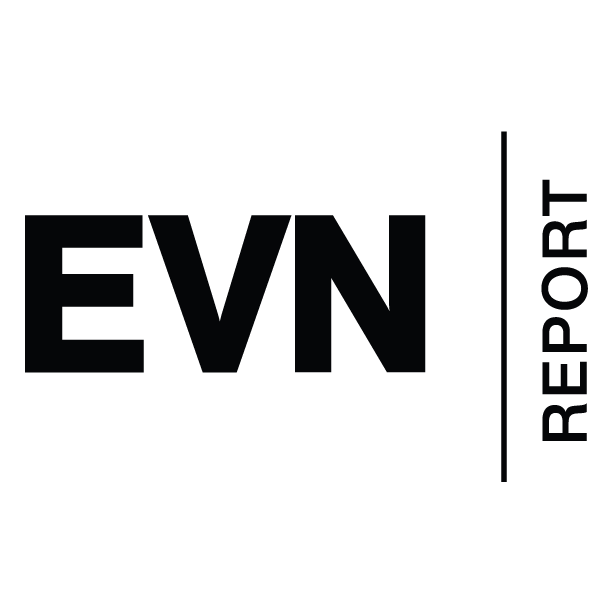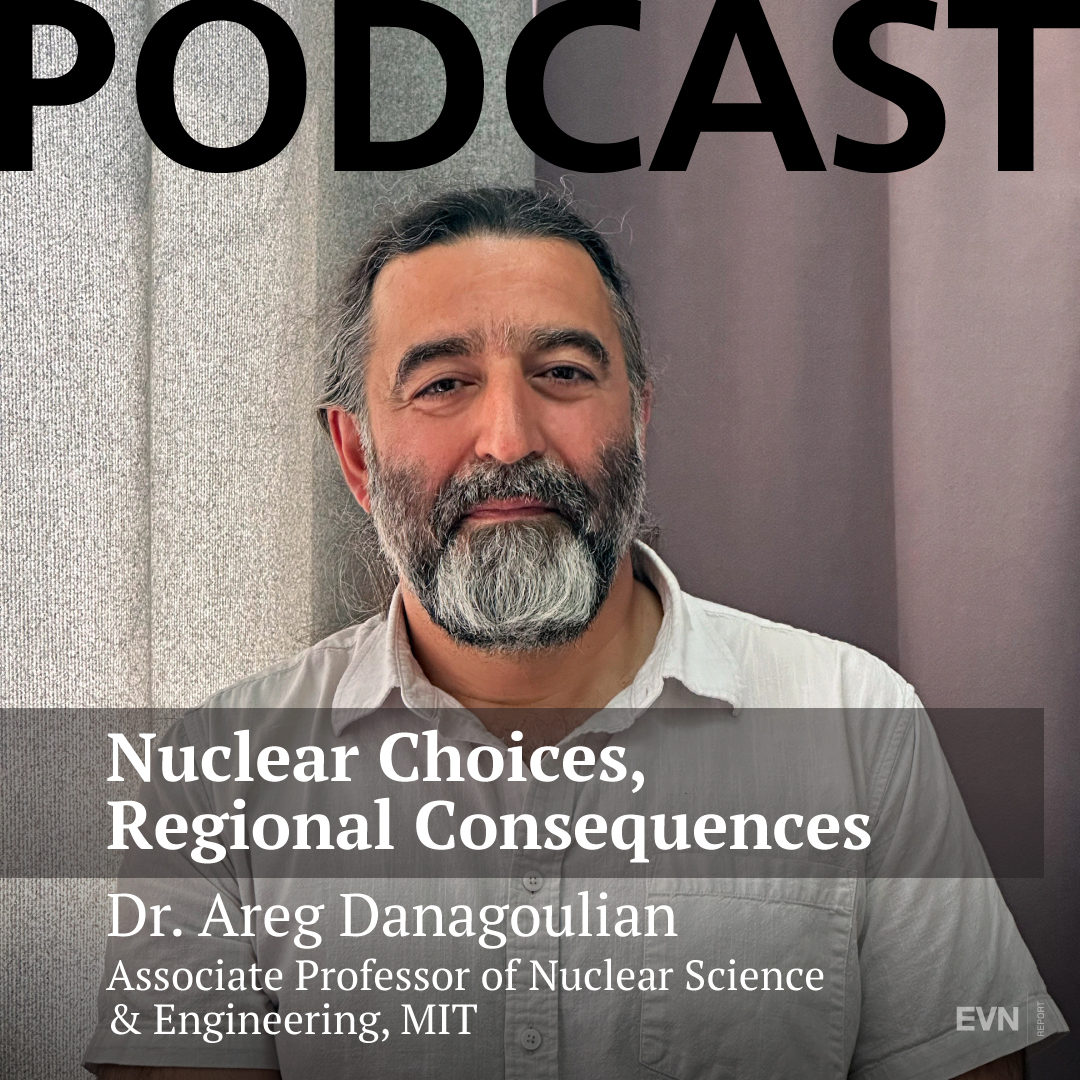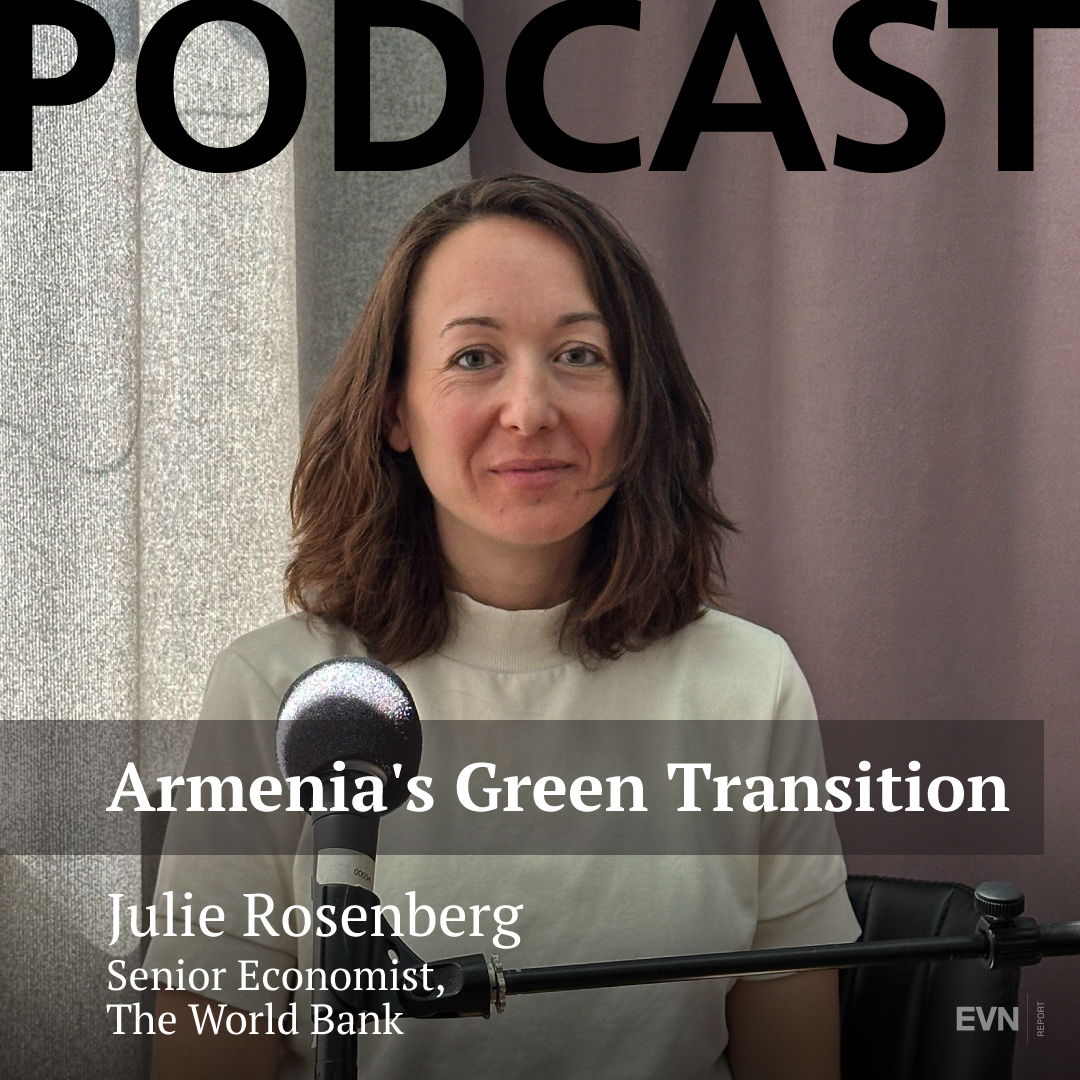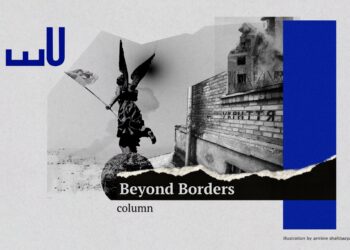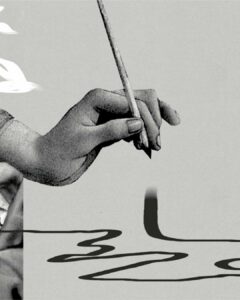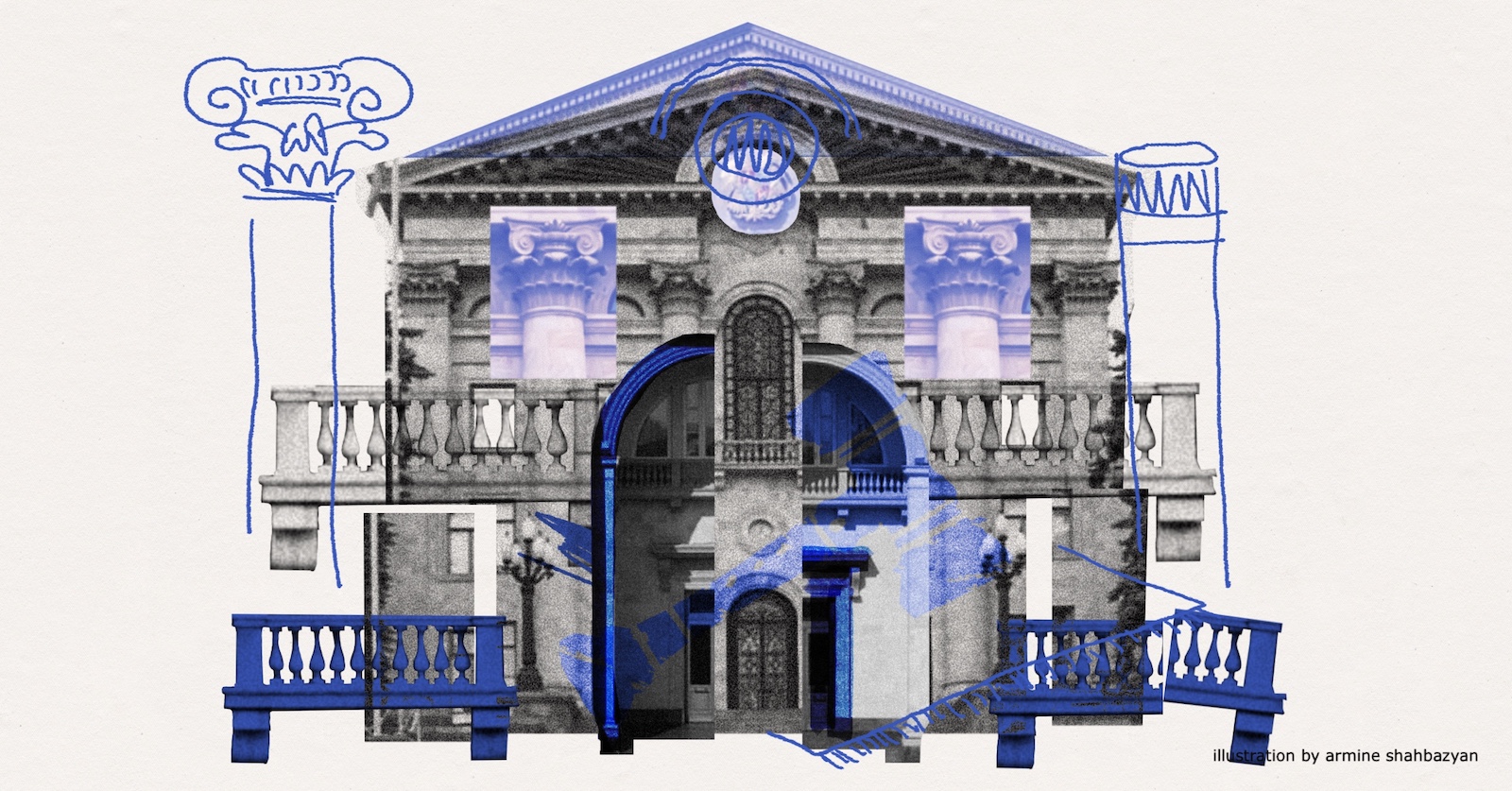
Listen to the article.
In a televised address on February 19, Prime Minister Nikol Pashinyan outlined the principles of an ideological framework he called the “Real Armenia”, which he defines as the Republic of Armenia within its internationally recognized territory. He reiterated his long-held view of equating the homeland with the internationally recognized state—and patriotism with the interests of the state. For this patriotism to develop, he argued, citizens must see themselves as sources of legal order, recognizing the constitution as a collective agreement. He added that adopting a new Constitution through a referendum is crucial, as past iterations lacked credibility. The ultimate goal, he said, is to become “a state-building people.” Pashinyan previously raised the issue of Constitutional amendments as early as 2018, but made the case “not [for] Constitutional amendments, but a new Constitution” in January 2024.
Justice Minister Srbuhi Galyan told reporters the day after Pashinyan’s address, that the government intends to finalize the draft text by the next parliamentary elections, scheduled for June 7, 2026. She added that the country’s parliamentary system of governance would remain unchanged as part of the amendment package.
In parallel, ongoing peace talks with Azerbaijan have become part of the discussions with regard to constitutional amendments, Baku has repeatedly called for the removal of what it calls “territorial claims” to its territory in the Armenian Constitution. Specifically, Baku refers to the preamble which contains a reference to Armenia’s 1990 Declaration of Independence, which in turn refers to a 1989 decision by the Soviet Armenian legislature and Nagorno-Karabakh National Council on unification.
On March 13, after Yerevan confirmed that talks regarding the peace treaty had concluded, the Azerbaijani Foreign Ministry reiterated its “long-lasting and principled position” that changes to Armenia’s constitution to remove alleged claims against to Azerbaijani territory “a prerequisite to allow the signing of the negotiated text.” Later that month, Minister Galyan insisted that the new Constitution should “not jeopardize” the prospective peace treaty. In her most recent remarks, she confirmed that the council tasked with amending the Constitution will decide by vote whether the reference to the Declaration of Independence should be preserved in the new Constitution or not.
After gaining independence in 1991, Armenia adopted its first Constitution through a nationwide referendum in 1995. Since then, the document has undergone two amendments—in 2005 and 2015—with each constitutional change occurring under a different president. The original Constitution was adopted under first President Levon Ter-Petrosyan, the first amendment under Robert Kocharyan, and the second under Serzh Sargsyan. Should Pashinyan’s proposed referendum succeed, he would become the fourth Armenian leader to modify the Constitution during his tenure.
1995
During the first years of independence, Armenia functioned under a significantly amended 1978 Soviet Armenian Constitution. To bridge the gap until a new constitution was adopted, the country relied on the 1990 Declaration of Independence and the International Covenant on Civil and Political Rights, ratified by parliament in 1991.
Drafting the Constitution had begun as early as 1990, when an expert commission was set up by parliament. Among the chief co-authors of the constitution were Vladimir Nazaryan, a prominent lawyer who was Prosecutor General of Soviet Armenia in 1988-1990 and later headed the parliament’s legal department; and Eduard Yegoryan, chair of the Parliamentary Committee for State and Legal Affairs. A 2005 Council of Europe report noted that it was “based on the French Constitution but confers powers on the President of the Republic which are judged as too extensive.” Raffi Hovannisian, Armenia’s first Foreign Minister, also wrote in a 1998 report that the Armenian President wields authority comparable to the French President, but with additional “powerful leverages” over the judiciary. This is known as the so-called super-presidential model.
Changes and Principles
The 1995 Constitution granted the president the authority to appoint and dismiss the prime minister and cabinet members, dissolve the National Assembly, and call snap elections. The president oversees foreign policy, serves as commander-in-chief of the Armed Forces, appoints four of the nine members of the Constitutional Court, has the power to issue decrees, and declare martial law.
Parliament’s responsibilities include approving the state budget, declaring war, ratifying international agreements, and passing votes of no confidence in the government. Lawmakers are immune from prosecution unless approved by Parliament. The National Assembly can remove the president with a two-thirds majority, following a Constitutional Court ruling, in cases of treason or other serious crimes.
Beyond defining the powers of the government branches, the constitution safeguards private property and human rights, including freedom of movement, thought, conscience, religion, speech, association (with exceptions for Armed Forces and law enforcement), and assembly. It also ensures national minorities can preserve their traditions and develop their language and culture.
President Levon Ter-Petrosyan argued that while not ideal, the constitution could ensure stability and security for several decades. He further stated that Armenia’s independence, security, and prosperity depends on it. He attempted to dispel concerns about his concentration of power by asserting the proposed changes would make it easier to check the president, as a simple majority in parliament would suffice to overturn vetoes or trigger government resignations, a reduction from the previous two-thirds threshold.
All opposition parties opposed the draft constitution on the grounds that it gave the presidency too much power. The Communist Party additionally wanted a provision for recalling parliament deputies. The National Democratic Union led by Vazgen Manukyan specifically called for a parliamentary republic, while the Union of National Self-Determination led by Paruyr Hayrikyan sought more power to local self-government bodies. Another major opposition party, the ARF (Dashnaktsutyun), was banned at the time.
A report by the U.S. Helsinki Commission (Commission on Security and Cooperation in Europe) described it as creating a strong presidency. A State Department report said the role of the legislature “relative to the executive branch is severely circumscribed.” Freedom House characterized the new constitution as providing for “a weak legislature and the strongest presidency among the OSCE nations,” which at the time had more than 50 member states.
Stephan H. Astourian of the University of California, Berkeley argued in a 2001 working paper that the Constitution and the Armenian political system in general are “best characterized as hyperpresidential” as they provide the president with “extensive powers, which reflect Armenia’s Soviet past and lack of established democratic traditions.” Many provisions also gave the president a right to suspend or restrict civil liberties under “poorly specified conditions.” At the same time, Astourian argued that, as shown by Ter-Petrosyan’s resignation in 1998, “if the holder of the office lacks legitimacy and finds that his policies are rejected by both the political elite and society, in practice he will be extremely weak” and “hyperpresidentialism will prove an empty shell.”
The Referendum
The Constitution was adopted in a nationwide referendum on July 5, 1995. Armenia’s first parliamentary elections were also held the same day. As such, that day is an official national holiday dedicated to the Constitution and state symbols.
The referendum passed with 68% of voters’ approval and 28.7% voting against. The turnout stood at 55.6%. The requirement was for a simple majority voting in favor and the “Yes” vote equaling no less than one-third of eligible voters.
According to the opposition and international observers, state-run media ran a biased campaign in favor of the Constitution. The authorities printed and distributed some 150,000 copies with a sample ballot inside that had the no vote crossed out, while the Central Electoral Commission produced thousands of posters urging voters to adopt the Constitution.
Local and foreign observers reported various sorts of violations. The assessment of the OSCE Parliamentary Assembly observer delegation was that the constitutional referendum and parliamentary election were “free but not fair,” which the Helsinki Commission explained as follows: “Voters could cast their ballots without impediment on July 5, but the conditions of the campaign did not let parties compete on an equal basis.” It explained shortcomings in conducting the voting mostly by inexperience. The State Department statement voiced concerns that the tabulation of votes on the constitution was not transparent.
First Attempt: 2003
After Armenia joined the Council of Europe in January 2001, it committed to reforming the Constitution to “fulfill some of its most important obligations and commitments” to that organization and bring it “in line with European standards.”
A presidential commission was set up, followed by a parliamentary commission. The reform aimed to reduce the sweeping powers vested in the presidency. The draft, ready by early 2003, was dismissed by opposition as superficial. Less than two months before it was put to vote, President Kocharyan watered down the already insignificant changes by keeping the then-existing mechanisms for the formation of the cabinet effectively intact. Although he initially said the constitutional reform is “extremely important” for Armenia, he himself did not campaign for it and stated during the campaign that he will “not seek to impose them on the people at any cost.” The issue was “thoroughly ignored by virtually all contenders” during the campaign, though opposition leader Stepan Demirchyan did call supporters to vote against it.
The referendum was held concurrently with parliamentary elections on May 25, 2003, but did not meet the threshold for approval. Official results showed a 52% voter turnout, with 46% supporting the referendum and 45.4% opposing it. However, the referendum required at least one-third of eligible voters to approve the measure, which was not achieved. The voting process faced criticism from opposition parties and electoral observers.
2005
Kocharyan continued his efforts to reform the constitution shortly thereafter. Opposition parties repeatedly spoke out against these efforts as they considered Kocharyan an illegitimate president for allegedly rigging the 2003 election. Polls throughout 2004 and 2005 showed widespread unawareness and pervasive apathy among the public.
The amendments were initially approved by parliament in May 2005, but were harshly criticized by the Venice Commission, a body of the Council of Europe responsible for legislative reform, for not taking its earlier recommendations into consideration. The Parliamentary Assembly of the Council of Europe (PACE) additionally criticized the draft, specifically calling on the Armenian government to give more powers to parliament, strengthen judicial independence and make the mayor of Yerevan an elected official.
The recommendations were formally accepted by Yerevan in June, paving the way for universal praise by the West, including the Council of Europe, the EU, the U.S., and the OSCE. Venice Commission head Gianni Buquicchio said the revised constitution “would facilitate Armenia’s integration into the European structures […] prosperity, stability and the resolution of socio-economic problems facing this country.” The final parliamentary approval came in September 2005.
Key Amendments
The proposed constitutional amendments aimed to rebalance power dynamics among the government, parliament and judiciary, with the intent of aligning the country’s constitutional framework more closely with European democratic standards. Most of these amendments were scheduled to be implemented between 2007 and 2008.
The key amendments concerned separation of powers, presidential immunity, and local self-government. According to the 2005 Constitution, the President appoints the Prime Minister who “enjoys the confidence of the majority of parliament deputies” and the Prime Minister could be dismissed only by a non-confidence vote in parliament. A fifth of parliamentarians could apply to the Constitutional Court. During and after the mandate, the president will be non-liable for acts arising from duties and during the mandate and will enjoy immunity from prosecution for acts arising from presidential duties during and after their terms, and can be prosecuted for actions not connected to their presidential powers after their term. The new constitution also made the capital Yerevan a local-self government unit with an elected mayor. It also set up an Ombudsperson’s office, an independent and nonremovable office elected by three fifths of Parliament for a six-year mandate.
Kocharyan argued that the changes were not in his personal interest and that it was necessary to adopt the amendments for the sake of the general interest of the nation and future generations. A Council of Europe report noted that there was “an impression amongst the population that the constitutional changes were something imposed by the West and not really wanted by the authorities.”
Despite receiving Western support, the parliamentary opposition continued to reject the proposed changes. They called for more substantial restrictions on presidential powers and advocated for the direct election of Armenia’s provincial governors, who are appointed by the central government. While some opposition figures acknowledged the reforms as a positive step, they simultaneously argued that the changes were insufficiently comprehensive.
Referendum
The nationwide referendum took place on November 27, 2005. According to official results, turnout stood at 65.4% with 93.2% voting in favor of the new constitution and 5.4% against. It thus easily passed the “exceptionally high” threshold of a third of eligible voters approving it. Although initially inclined to campaign for a “No” vote, the opposition changed its tactics before the referendum to call for a boycott as they believed the government would more easily falsify the results with high turnout. They considered Kocharyan to be illegitimate after having rigged the 2003 parliamentary election and saw the referendum as a vote of no-confidence.
The campaign and voting was marred with general apathy. Council of Europe observers noted that “practically all polling stations in Yerevan were strikingly empty.” They quoted opposition observers as having counted two to four times fewer people than those announced by the chair of the polling station. The observers reported “a large number of almost identical clearly forged signatures” and “witnessed people voting with multiple passports or casting several ballots.”
The largest local election monitoring organization reported widespread fraud, including ballot stuffing. The opposition did not accept the results and staged protests. Voter fraud was admitted by parliament speaker and coalition partner Artur Baghdasrayan.
The Council of Europe report said that “unless the authorities take decisive measures to immediately investigate the instances of fraud observed, the adoption of a new Constitution, which is supposed to bring Armenia closer to European values and principles, will remain forever stained by a doubtful credibility. No reform is truly democratic when it is achieved through undemocratic means.” That the Council of Europe supported the changes did not mean it is “ready to accept it at any price,” it said. The U.S. said it shared the Council of Europe’s “regret”, while the EU expressed concern at reports of ballot stuffing and manipulation of the turnout figures. Nevertheless, the Venice Commission chief said the new constitution will “bring Armenia closer to Europe”, while President Kocharyan stated that it will help turn Armenia into a democratic and rule-of-law country where human rights are respected by the state.
2015
The constitutional changes made in 2015 were vastly different from 2005. They radically changed Armenia’s system of government, making it a parliamentary republic where the president holds a largely ceremonial role and the prime minister, elected by parliament, holds executive power instead.
The changes were first announced in April 2014, when then-President Serzh Sargsyan also pledged that he would not stay in power. “I believe that one person must not aspire to the reins of power in Armenia for more than twice in a lifetime,” he stated. However, his allies did not rule out that possibility and the opposition accused him of changing the country’s fundamental law to stay in power after two presidential terms. In 2018, when Pashinyan was still an opposition parliament member, he criticized the 2015 constitutional amendments, calling them “a suit tailored to fit Serzh Sargsyan.”
The presidential commission formally proposed a parliamentary republic to address the overcentralized government system and finalized the text in August 2015. It was approved two months later with the ruling Republican Party, tycoon Gagik Tsarukyan’s Prosperous Armenia, and the Armenian Revolutionary Federation (ARF, Dashnaktsutyun) backing the changes, while Levon Ter-Petrosyan’s Armenian National Congress, Raffi Hovannisian’s Heritage and Artur Baghdasaryan’s Orinats Yerkir opposing. The amendments were approved by the Council of Europe’s Venice Commission after changes were made to the provision on second round of elections if no stable parliamentary majority is formed as a result of the election or through forming of a coalition. The revised version stipulates that a run-off vote “may” take place.
Sargsyan’s constitutional changes were also criticized and opposed by former President Robert Kocharyan and former Foreign Minister Vartan Oskanian. The “No” campaign was spearheaded by Ter-Petrosyan’s ANC and Hovannisian’s Heritage and allied parties and civic groups.
Referendum
The referendum, which took place on December 6, 2015 officially saw a 50.7% turnout with the “Yes” vote at 66.2% and the “No” vote at 33.8%. It was approved by passing the threshold of one-quarter of eligible voters. The “Yes” vote was defeated only in Yerevan’s Kentron district, and Armenia’s second and third largest cities, Gyumri and Vanadzor.
The official referendum results starkly diverged from pre-election polling, which had indicated 35% in favor of the new constitution and 32% opposed. Analysis of electoral participation suggested that genuine support for the constitutional changes was substantially lower, ranging between 15% and 40%.
Both domestic and international election observers delivered critiques of the voting process. Armenian civic monitoring organizations immediately leveled serious allegations of electoral fraud, documenting systematic irregularities including ballot box stuffing, ballot theft and miscounting, multiple voting, and the intimidation of electoral observers by government officials and their supporters. Their final report unequivocally stated that the results “do not reflect the will of the citizens of Armenia.”
The small group of OSCE experts from its Office for Democratic Institutions and Human Rights (ODIHR) stated that there were “serious problems” with vote counts. The U.S. Embassy expressed concern about the “credible allegations of electoral irregularities reported by both non-partisan observers as well as Armenian political parties.” Former President Kocharyan also accused Sargsyan’s government of widespread fraud.
The changes of the 2015 Constitution went into effect after the 2017 parliamentary elections, where the ruling Republican Party easily won a majority in likewise controversial elections. In April 2018, Sargsyan broke his own pledge, accepting nomination by his Republican Party and its junior coalition partner ARF for prime minister, triggering protests led by Nikol Pashinyan that culminated in the Velvet Revolution.
Also see
Stable Majority Clause “Endangers Parliamentary Rule in Armenia”
Armenia's controversial "stable majority" provision distorts proportional representation and weakens parliamentary democracy. With elections expected in 2026, concerns remain over its impact on governance, coalition-building and legitimacy. Hranoush Dermoyan explains.
Read moreBaku’s Demand for Armenia to Amend Constitution Lacks Legal Credibility
The latest obstacle to a peace agreement between Armenia and Azerbaijan is Baku’s demand that Armenia amend its Constitution, specifically the preamble referencing the Declaration of Independence. Zaven Sargsian argues that Azerbaijan’s argument is deeply flawed.
Read moreA People’s Constitution Must Be Framed by the People
July 5 marks Constitution Day in Armenia. Constitutional reform is still on the mind of the re-elected Prime Minister, whose approach to forming a constitutional package has so far greatly resembled that of his predecessors. But there are more participatory models that could be adopted.
Read moreRecently published
EVN Security Report
Armenia, the 12-Day War and Strategic Ambiguity
Armenia faces a strategic dilemma after the 12-Day War, when Israel and the United States tried to dismantle Iran’s nuclear program through force. With key bilateral partnerships on both sides, Yerevan needs to utilize the policy of strategic ambiguity to navigate an increasingly complex and high-risk regional landscape.
Read morePodcasts
Nuclear Choices, Regional Consequences
MIT nuclear physicist Dr. Areg Danagoulian analyzes Iran’s nuclear weapons program following recent Israeli strikes, assessing regional security implications for Armenia. The conversation explores Armenia’s nuclear energy future, the need for small reactors to replace aging infrastructure, and challenges in developing nuclear engineering expertise domestically.
World Bank senior economist Julie Rosenberg discusses Armenia’s path to green growth, focusing on reducing natural gas dependency, expanding solar energy, addressing water management challenges, and implementing key policy and financing reforms outlined in the Country Climate and Development Report.
Politics
India-Pakistan Escalation, Nuclear Deterrence and Armenia’s Defense Outlook
The India–Pakistan escalation underscores the power and limits of nuclear deterrence, reveals shifting regional alliances involving Turkey, Azerbaijan, and Pakistan, and highlights implications for Armenia’s security posture, including the role of Indian weapons systems in its evolving defense strategy.
Read moreColumns
Kyiv Doesn’t Sleep: A Dispatch From a City at War
More than three years into Russia’s invasion, Kyiv has adapted to the rhythms of war. Resistance has faded into daily routine, yet the consequences of this conflict still ripple far beyond Ukraine, including into the South Caucasus.
Read moreTo the One Who Refused to Hate Us
Azerbaijani activist Bahruz Samadov was imprisoned for his pro-peace stance. In this open letter, Sheila Paylan highlights the brutal cost of dissent under Azerbaijan’s authoritarian regime and the moral failure of silence in the face of repression.
Read moreCreative Tech
Armenia and Innovation: Time to Challenge the Stereotypes
Outdated assumptions, from equating innovation with cutting-edge scientific breakthroughs to glorifying Armenia’s Soviet-era academic legacy, continue to shape misguided strategies. Ani Toroyan unpacks five such narratives, urging a more pragmatic, ecosystem-aware approach that reflects Armenia’s current realities and development potential.
Read more